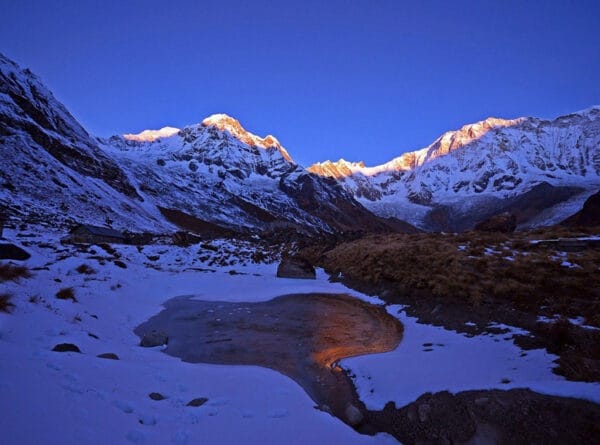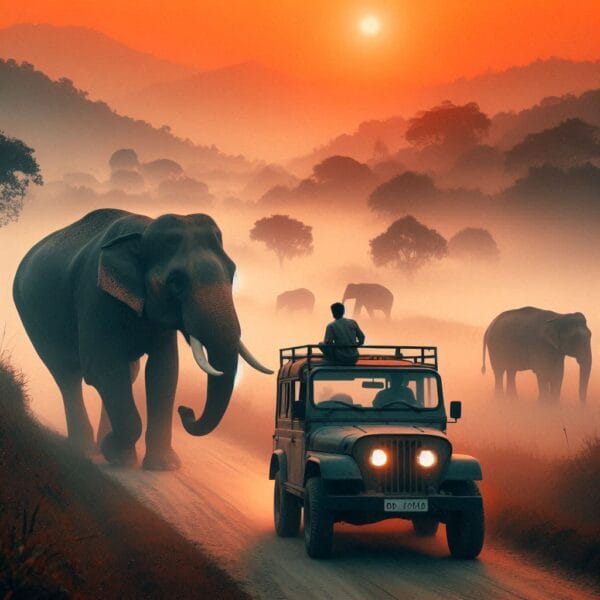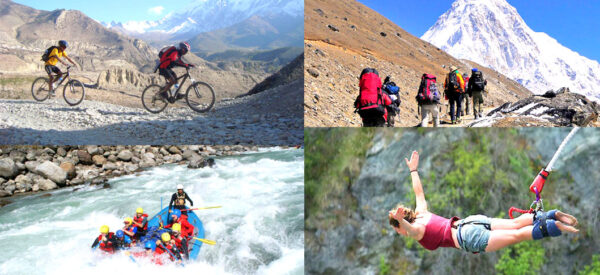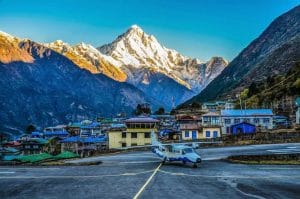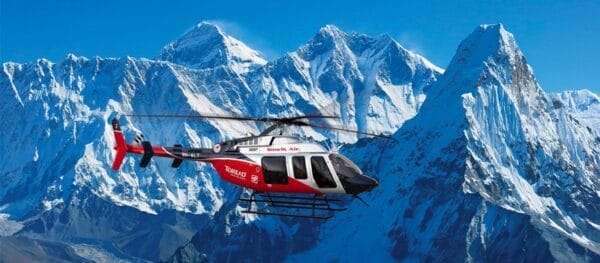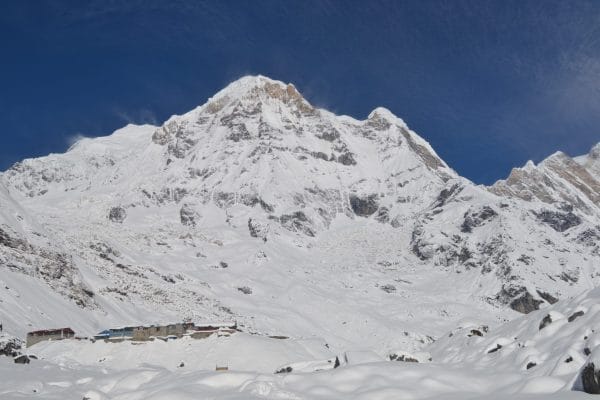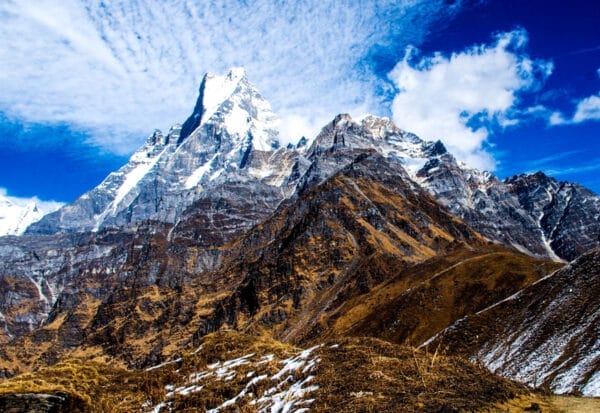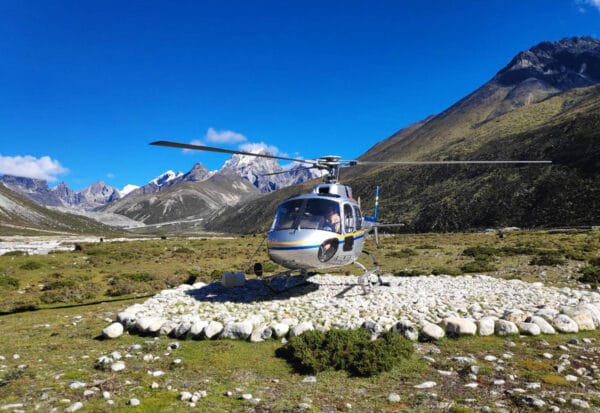Kanchenjunga Trekking Guide: Routes, Permits & History

Overview
Duration: 27 Days
Secondary Activity: Nature and Culture
Max altitude: 5,388 m/17,673 ft
Transportation: Private Vehicle and Domestic Flight
Trip ends in: Kathmandu
Accomodation: Simple Local Cottage and Tent Camp
Primary activity: Trekking and Hiking
Group Size: Min. 2 Pax
Country: Nepal
Trip starts from: Kathmandu
Difficulty: Strenuous
Meals: Nepali Local and Continental
Best Season: Autumn and Spring
Introduction
Kanchenjunga, standing at 8,586 m (28,169 ft), is the world’s third-highest peak, straddling Nepal and India’s Sikkim. Meaning “Five Treasures of Snow,” it holds deep cultural and spiritual importance for locals, shaping their beliefs, climate, and ecosystems. The surrounding region, including Sikkim’s Khangchendzonga National Park a UNESCO World Heritage Site hosts rich biodiversity and demands strong conservation efforts.
History
Over the past 65 million years, powerful global plate-tectonic forces have moved Earth’s crust to form the band of Eurasian mountain ranges including the Himalayas that stretch from the Alps to the mountains of Southeast Asia.
Around 201–145 million years ago, the Tethys Ocean bordered southern Eurasia. As Gondwana broke apart (180 million years ago), the Indian Plate drifted north toward Eurasia. Over millions of years, the Tethys Ocean narrowed, compressing marine sediments and forming faults, with magma intrusions from the mantle. About 40–50 million years ago, India collided with Eurasia, sub ducting beneath the Tethys trench—triggering the uplift that formed the Himalayas.
Kailas RangeNorthern side of Kangrinboqê Peak (Mount Kailas), in the Kailas Range, Trans-Himalayas, Tibet Autonomous Region, China.
Over the past 30 million years, the uplift of the Tibetan Plateau and Trans-Himalayan ranges transformed Asia’s climate and river systems. Heavy rains on the Himalayas’ southern slopes carved deep river valleys, with the Indus, Ganges, and Brahmaputra carrying vast sediments into the Arabian Sea and Bay of Bengal. Around 20 million years ago, Himalayan mountain building accelerated as the Indian Plate thrust under Eurasia, forming massive nappes and folding Gondwana rocks. Continuous uplift, erosion, and sediment deposition created the Indo-Gangetic Plain, with alluvium depths reaching 7,600 m. During the Pleistocene, the Himalayas rose to become the world’s highest peaks, including Everest, with fossil-bearing rocks atop summits. This rise formed a climatic barrier—drying the north, intensifying monsoons to the south, and reshaping river courses through the Siwalik and Lesser Himalayas.
In some valleys, such as the Vale of Kashmir and the Kathmandu Valley of Nepal, lakes formed temporarily and then filled with Pleistocene deposits. After drying up some 200,000 years ago, the Kathmandu Valley rose at least 650 feet (200 meters), an indication of localized uplift within the Lesser Himalayas.
Height of Kanchenjunga
At 8586 meters (28169 feet), Mount Kanchenjunga is 262 meters (860 feet) lower than Mount Everest, which also rises to 8848 meters (29029 feet). These two mighty outstanding peaks are essential components of the Himalayan mountain range of Nepal. The relative heights of these two majestic mountains highlight their significance in high-altitude climbing. As the world’s highest peak, Everest attracts climbers worldwide, while Kanchenjunga is praised for its exceptional beauty and cultural significance.
Major Peaks of the Mt. Kanchenjunga Massif:
|
Peak Name |
Elevation (meters) |
Elevation (feet) |
Location |
|
Kanchenjunga Main |
8,586 |
28,169 |
Border of Taplejung District, Nepal, and Sikkim State, India |
|
Yalung Kang (Kanchenjunga West) |
8,505 |
27,904 |
Taplejung District, Nepal |
|
Kanchenjunga Central |
8,482 |
27,828 |
Border of Taplejung District, Nepal, and Sikkim State, India |
|
Kanchenjunga South |
8,494 |
27,867 |
Border of Taplejung District, Nepal, and Sikkim State, India |
|
Kangbachen
|
7,903 |
25,928 |
Taplejung District, Nepal |
Kanchenjunga Climbing Route
Ascending this daunting mountain comes with considerable challenges, and over the years, various routes have been established, mainly from the Nepalese side. Each route offers unique difficulties and experiences, drawing climbers eager to test their skills and resilience. As climbers navigate these routes, they are rewarded with breathtaking views and a profound sense of achievement.
Southeast Ridge (Yalung Face): This route is the most frequently used and is regarded as the standard path for ascending Kanchenjunga. It was the same route during the first successful ascent 1955 by climbers Joe Brown and George Band.
The journey begins at the Yalung Glacier, approaching the Mountain from the southwest. Climbers traverse the Yalung Face, an expansive area covered in snow and ice, to reach the Great Shelf, a notable sloping plateau at about 6,500 meters. From there, the ascent continues, requiring climbers to navigate various icefalls and seracs before finally reaching the summit ridge.
Southwest Ridge: This route is less commonly used due to its inherent hazards and technical difficulties. Climbers approach the Mountain’s southwest slopes from the Yalung Glacier, encountering steep ice and rough terrain that demand precise navigation and advanced climbing skills to navigate avalanches and prevent serious falls safely.
Northeast Spur: This route was first successfully ascended by an Indian Army team in 1977. From the northeastern side, climbers face a significant spur combining rock, ice, and snow climbing. Known for its continuous technical challenges, this route also exposes climbers to the harsh conditions often found at high altitudes. Navigating this path requires physical strength and mental resilience, as climbers must adapt to rapidly changing weather and rugged terrain. Each ascent brings a sense of adventure and achievement as trekkers conquer the demanding elements and push their limits. The experience of climbing this route offers a unique perspective on the Mountain’s beauty and formidable challenges, making it a rewarding journey for those who dare to take it on.
North Face: This route is among the least frequently attempted, primarily because of its remote access and challenging climbing conditions. Climbers must navigate the intricate terrain of the Kangchenjunga Glacier, tackling steep ice faces and crossing areas filled with crevasses.
Climbing Challenges
Kanchenjunga is well-known for its technical challenges, erratic weather, and significant risk of avalanches. Even with improvements in climbing gear and techniques, the Mountain has a daunting fatality rate, with over 20% of climbers losing their lives since the 1990s.
These persistent challenges contribute to Kanchenjunga’s reputation as one of the most intimidating peaks for mountaineers around the globe. The combination of its rugged terrain and harsh conditions demands exceptional skill, physical endurance, and a deep respect for the Mountain’s power. As climbers prepare to tackle this formidable giant, they must be aware of the risks involved and prioritize safety while embracing the adventure of such a majestic and challenging ascent.
Trekking Routes to Kanchenjunga
Mount Kanchenjunga offers a variety of trekking routes in both Nepal and India, including the Kanchenjunga Base Camp Trek in Nepal, the Goecha La Trek in Sikkim, and the Singalila Ridge Trek in West Bengal. Each trek presents unique challenges and breathtaking views, showcasing the region’s beauty from different perspectives. These trails allow trekkers to experience the area’s majestic beauty and immerse themselves in the Mountain’s rich cultural heritage. Adventurers are rewarded with breathtaking landscapes and the chance to connect with local communities.
Kanchenjunga Base Camp Trek (Nepal)
The Kanchenjunga Circuit Trek is renowned for its remote and challenging nature and typically takes 18 to 22 days. Starting in Taplejung, eastern Nepal, the trek takes adventurers through diverse landscapes, including lush subtropical forests, alpine meadows, and glacial terrains.
Trekkers can visit the North and South Base Camps of Kanchenjunga, which offer close-up views of the majestic Mountain and its surrounding peaks. This challenging trek requires special permits and is perfect for experienced adventurers seeking solitude and a meaningful connection with Nepal’s pristine natural beauty.
Reaching Kanchenjunga Circuit Trek
The trek generally commences in Taplejung, situated in eastern Nepal. Below are the directions to reach this starting point:
By Air:
Kathmandu to Bhadrapur Airport: Take a flight from Tribhuvan International Airport in Kathmandu to Bhadrapur Airport, located in Jhapa District.
Bhadrapur to Taplejung: After arriving in Bhadrapur, travel by road for about 8 to 9 hours to reach Taplejung. This journey offers scenic countryside views, making it a memorable part of the trek preparation.
By Road:
Traveling overland from Kathmandu to Taplejung involves a long bus or jeep journey that may last 24 hours or more, influenced by road conditions. This route offers travelers the chance to enjoy Nepal’s varied landscapes, but it requires patience and resilience due to the lengthy duration of the trip.
Accommodation Options
The Kanchenjunga region provides essential lodging options, with teahouses run by local families that offer simple accommodations and meals for trekkers.
Camping: Organized camping with support staff becomes essential in more secluded regions where teahouses are inaccessible for a comfortable experience.
Permit Requirements and Costs
Trekking in the Kanchenjunga region requires several permits:
Restricted Area Permit (RAP):
Cost: USD 20 per person per week for the first four weeks, increasing to USD 25 per week thereafter.
Details: This permit is required for trekking in restricted areas and must be acquired through a registered agency. Securing this permit is crucial for ensuring compliance with local regulations and promoting sustainable tourism in these sensitive regions.
Kanchenjunga Conservation Area Project (KCAP) Entry Permit:
Cost: NPR 2,000 per person (around USD 17).
Details: This fee is necessary for access to the conservation area and can be obtained either in Kathmandu or at the beginning of the trail. Acquiring this entry permit is essential for supporting conservation efforts and protecting the region’s natural resources.
Trekker’s Information Management System (TIMS) Card:
Cost: USD 17 per person
Details: This fee is intended to improve the safety and security of trekkers and can be obtained through trekking agencies. It is essential to offer peace of mind during the trek and ensure necessary support is accessible in emergencies.
It is important to note that regulations mandate trekkers to be accompanied by a licensed guide, and solo trekking is prohibited in this area. Choosing a reputable trekking agency is recommended. Be employed to facilitate permit arrangements, ensure adherence to the latest regulations, and enhance safety by enriching the trekking experience through local expertise and knowledge.
Goecha La Trek (Sikkim, India)
The Goecha La Trek is well-known for its spectacular sunrise views of Kanchenjunga and is regarded as a more accessible trekking option in Nepal, usually taking 10 to 11 days. Starting in Yuksom, the route winds through vibrant rhododendron forests, alpine meadows, and glacial rivers, ending at Goecha La Pass, which stands at approximately 4,940 meters (16,207 feet). Trekkers can take in stunning views of Kanchenjunga and other majestic peaks, making it suitable for various trekking enthusiasts.
Singalila Ridge Trek (West Bengal, India)
The Singalila Ridge Trek provides sweeping views of some of the highest peaks in the world, including Kanchenjunga, Everest, and Makalu. This six- to seven-day trek begins in West Bengals Darjeeling. At Sandakphu, the highest point in West Bengal, the route reaches a maximum elevation of about 3636 meters (11929 feet). It follows the Singalila Ridge, which forms the Indian-Nepal border. Both new and experienced hikers prefer this trek because of its reasonably moderate difficulty level and the availability of teahouse accommodations.
Each trek provides a distinct view of the majestic Kanchenjunga and its surrounding scenery; whether looking for the challenge of a remote circuit, the beauty of sunrise illuminating towering peaks, or the experience of traversing varied terrains with breathtaking mountain vistas, adventurers can find a trek that suits their goals and skill levels.
FAQs
1. Where is Mount Kanchenjunga located?
Mount Kanchenjunga is located in the eastern Himalayas, straddling the border between Nepal’s Taplejung District and the Indian state of Sikkim.
2. What is the height of Mount Kanchenjunga?
Mount Kanchenjunga stands at 8,586 meters (28,169 feet), making it the third highest mountain in the world.
3. What does the name ‘Kanchenjunga’ mean?
The name “Kanchenjunga” means “Five Treasures of Snow,” symbolizing its five prominent peaks, each holding cultural and spiritual significance.
4. Which is the most popular climbing route for Kanchenjunga?
The Southeast Ridge, also known as the Yalung Face, is the most popular and standard climbing route for Kanchenjunga. It was used during the first successful ascent in 1955.
What permits are required for trekking in the Kanchenjunga region?
Trekkers need three permits:
- Restricted Area Permit (RAP)
- Kanchenjunga Conservation Area Project (KCAP) Entry Permit
- Trekkers’ Information Management System (TIMS) Card
A licensed guide is mandatory, and solo trekking is prohibited.
5. When is the best time to trek to Kanchenjunga?
The best seasons are Autumn (September to November) and Spring (March to May), when weather conditions are most favorable.
How difficult is the Kanchenjunga trek?
The trek is considered strenuous due to its remote location, high altitude, and long duration, making it suitable for experienced trekkers.
6. How do I reach the starting point of the Kanchenjunga Circuit Trek?
The trek usually starts from Taplejung in eastern Nepal. You can either:
- Fly from Kathmandu to Bhadrapur, then drive 8–9 hours to Taplejung.
- Travel entirely by road, which can take over 24 hours.
7. What accommodation is available during the Kanchenjunga trek?
Accommodation includes basic teahouses run by local families along the route. In more remote areas, organized camping with support staff is necessary.
What are the major peaks in the Kanchenjunga massif?
- Kanchenjunga Main (8,586 m)
- Yalung Kang (8,505 m)
- Kanchenjunga Central (8,482 m)
- Kanchenjunga South (8,494 m)
- Kangbachen (7,903 m)
RELATED TRIPS
5 Day Annapurna Base Camp Trek
The 5-Day Annapurna Base Camp Trek offers a thrilling journey through Nepal’s stunning landscapes, beginning from Pokhara. Hike past...
Safaris in Chitwan National Park: A Journey into Wildlife
Safaris in Chitwan National Park Chitwan National Park, a UNESCO World Heritage Site, offers an unforgettable experience with elephant...
Adventure Nepal Tour
Embark on an unforgettable Adventure Nepal Tour, where thrilling activities await in the breathtaking landscapes of the Himalayas. Experience...
5 Day Everest View Trek: Unforgettable Journey into the Himalayas
Enjoy the breathtaking beauty of the 5-Day Everest View Trek, with stunning mountain vistas blending with the richness of...
Annapurna Skyline Trek Royal Trek
Annapurna Skyline Trek is surely one of the most dazzling day treks, which encompasses cultural insights into mountain scenery....
Everest Base Camp Helicopter Trek
Discover the Everest Base Camp Helicopter Trek: A Journey of Adventure and Culture If you’re seeking breathtaking mountain landscapes...
Annapurna Base Camp Trek
Embark on a unique trek that takes you past lush green forests, picturesque villages and terraced farmlands overlooking glacier...
Mardi Himal Trek
Mardi Himal Trek: A Journey into Nature and Culture The Mardi Himal trek is one of the most interesting...
Everest view Helicopter Tour
To see the Mt. Everest is a dream of every one. But everyone cannot trek to that height so...
Cultural Dinner in Kathmandu
Typical nepali restaurant offers with a typical Nepalese foods and Nepalese foods varieties. We have organized this wonderful 3...
All Nepal Tour
Nepal Tour Guide's All Nepal Tour covers the highlighted places like Bandipur, Palpa, Pokhara, Chitwan and Lumbini, and is...

